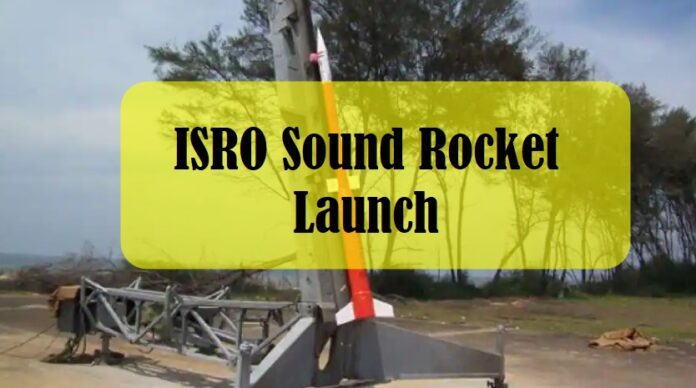ISRO launches the 200th ‘RH-200’ sounding rocket ushering India into the Commercial Space Industry.
ISRO Marks a Milestone by launching this Sound Rocket RH-200
Latest Update:
The space business is growing by leaps and bounds. The United States and China are well ahead of other aspirational countries in exploring space not only for defence but also for economic objectives.
Technocrats and scientists are working tirelessly to establish regular commercial communication between Earth and other neighbouring planets. The moon has already been captured. The United States has declared that it will launch a space station to assist missions to the moon or Mars. Some individuals have even reserved flights for the slot.
This is not wishful thinking, but a clear truth that says volumes about people’ imaginative and creative abilities. Scientific innovation is altering people’s entire way of life on the globe. What surprising developments may come in due course is a topic of speculation and hopes.
Step Towards Technological Foundation:
India is one of the countries with a solid technological foundation for space exploration. We have sophisticated technology, and getting a cryogenic engine was previously a challenge since the US or UK were unwilling to give us that technology, but our scientists and technocrats eventually succeeded in creating the engine indigenously.
It has shown to be successful and efficient due to its use by the Indian Space Research Organization. India’s first effort to land a satellite on the moon was a failure. However, ISRO was not discouraged by the initial failure and pledged to overcome the impediment. Engineers and scientists are hard at work on the second attempt, and we’ve been told that ISRO has made good progress toward its goal of landing on the moon.
In educated circles, it is commonly assumed that future battles may be space warfare. Given the advancements in missile technology, it is expected that nations with superior technologies would control the world through their space might.
If this occurs, the picture of the world will shift, as would the entire tale of earthly existence.
Perhaps our scientists will consider that option in the not-too-distant future. As a result, they would want to prepare for the task. India is a large country that cannot afford to be on the receiving end of such a situation.
Government Operation:
Although ISRO is entirely a government operation, it appears that the government should support private enterprise as well in order to launch rockets into space. Two critical factors played a role in the government’s decision to allow private enterprises to test the waters in the sector. The first point to consider is the cost. The government would want to see the cost of production fall to a manageable level.
The second reason is that the government want to foster the country’s talent by providing them with the opportunity to demonstrate their inventive capacity and talents. As such, the government’s plan to privatise the space sector in phases is a good one.
Our people were delighted and elated to learn that India successfully launched its first privately produced rocket, the Vikram-S, on Friday. This accomplishment might represent a watershed moment in the country’s efforts to develop a commercial space sector and compete on cost.

Details of Rocket Launched by ISRO:
The 545-kg rocket, manufactured 89.5 kilometers away by space start-up Skyroot, blasted launched from the Indian space agency’s launch facility in Chennai and reached a maximum height of 89.5 kilometers.
According to the business, the rocket can achieve Mach 5 – five times the speed of sound – and deliver an 83kg payload to a height of 100 kilometers.
We should mention that the Skyroot team set an 80km aim for its initial launch, which some agencies consider to be the space frontier.
The Karman line, defined by an international aeronautics authority as the border between the Earth’s atmosphere and space, is located at 100 kilometers altitude. The Vikram S rocket, named after the legendary Indian space scientist Vikram Sarabhai, did not exceed the international aeronautics body’s barrier of 100 kilometers.
The Skyroot team believes that appropriate manufacturing costs will not be exceeded. The technocrats are investigating this. They believe that after reviewing the outcomes of the recent rocket launch into space, it may be able to accomplish the cost reductions by employing a rocket architecture that can be manufactured in less than 72 hours using composite materials.
It intends to deploy satellite-delivery vehicles beginning next year. Skyroot, founded by Pawan Chandana and Bharath Daka, has set a goal of reducing development costs by up to 90% compared to existing platforms for launching tiny satellites.
Space Exploration moves ahead:
- Given the government’s strong backing for the Make in India policy, we should anticipate some daring firms to enter the battle and show interest in start-ups. With official support, the rapidly rising space sector is likely to attract the interest of numerous rivals both within and beyond the nation, allowing India to make her mark in space exploration.
- “After the government opened the door to private enterprises in 2020, Hyderabad-based Skyroot, launched in 2018 and funded by Singapore sovereign wealth fund GIC, was the first space start-up to sign an agreement to utilise Indian Space Research Organisation (ISRO) launch and test facilities.”
- It has so far raised 5.26 billion rupees (US$64.42 million) and employs around 200 individuals. “Nearly 100 persons were involved in its first launch effort,” wrote the Asia Times on November 15th.
- It is a day of celebration for the people of India, as well as the engineers and technocrats who worked on the Vikram-S rocket. However, this is only the proverbial top of the iceberg.
- This industry has a broad reach, and India should not fall behind as space becomes commercialised. We would like to congratulate the entrepreneurs since they will serve as role models for many others who wish to enter the area.
What are Sounding Rockets?
Sounding rockets are tiny, low-cost solid-fuel rockets used for testing, meteorology, and atmospheric investigations. They are used to investigate the Earth’s atmosphere or to test newly created sub-components before they are launched on larger rockets or satellites.
Because they employ solid fuel, which is less technical than liquid fuel, these rockets require significantly less time to construct and launch. Sounding rockets are typically launched at sub-orbital altitudes (less than 100 kilometers) and are not spacefaring rockets. However, bigger sounding rockets are also capable of reaching low earth orbit (550kms altitude)
The initial launch of the sounding rocket from the erstwhile Thumba Equatorial Rocket Launching Station on November 21, 1963, is largely recognised as the start of the Indian Space Programme (now a part of the larger VSSC campus).
The Nike Apache rocket:
The ‘Nike Apache’ rocket, manufactured in the United States, was the first to be launched from Indian land at the time. Following it, two-stage rockets from Russia (M-100) and France (Centaure) were launched.
While the M-100 could carry a payload of 70 kg to an altitude of 85 km, the Centaure could reach 150 km with a payload of 30 kg. The Hydrometeorological Services of the USSR inked an arrangement with ISRO in 1970 to launch their M-100 meteorological sounding rockets from TERLS once a week. This programme ran continuously until 1993.

Background ISRO:
ISRO began launching a series of indigenous sounding rockets dubbed ‘Rohini’ from TERLS in 1967. The RH-75, having a diameter of 75mm, was the first fully Indian sounding rocket, followed by the RH-100 and RH-125. The sounding rocket programme was, in fact, the foundation upon which launch vehicle technology was created.
The expertise obtained was crucial in understanding solid propellant technology and launch vehicle related systems. The Rohini sounding rockets have been used in a number of research missions with both national and international cooperation.
India currently deploys three sounding rocket variants: the RH-200, the RH-300-Mk-II, and the RH-560-Mk-III. These have cargo capacities ranging from 8 to 100 kg and can fly at altitudes ranging from 75 to 550 kilometers.
Conclusion:
The launch on Wednesday was the 200th straight flight of the indigenous RH-200 ‘Rohini’ sounding rocket. The ceremony will be held at the Vikram Sarabhai Space Centre in Thiruvananthapuram, Kerala, in the presence of former Indian President Ram Nath Kovind, Chairman of ISRO Dr S Somanath, Director of VSSC Dr.S.Unnikrishnan Nair, and other space agency officials.

| Social Media Links:- | #CONTENTONTHEEDGE – C.O.T.E |
| Youtube- ✅ | Subscribe to the YouTube channel of Content on the Edge |
| Facebook- ✅ | Like and Follow on Facebook for Latest content videos of C.O.T.E |
| Instagram- ✅ | Follow on Instagram for Latest content |
| Twitter- ✅ | Join Content on the Edge on Twitter for latest updates |
| Telegram Channel- ✅ | Join Telegram Channel to get latest files and updates |
| Telegram Group- ✅ | Join C.O.T.E Telegram Group to get latest updates |
| Whatsapp- ✅ | Click to text C.O.T.E on Whatsapp |
| Whatsapp Channel- ✅ | Click to Join C.O.T.E Whatsapp Channel for Latest Updates |
Join CONTENT ON THE EDGE's Whatsapp Channel to Get Latest Updates, Softwares, Apps and Non- Copyright Material
WATCH VIDEO BY CREATORS Drishti IAS : English




